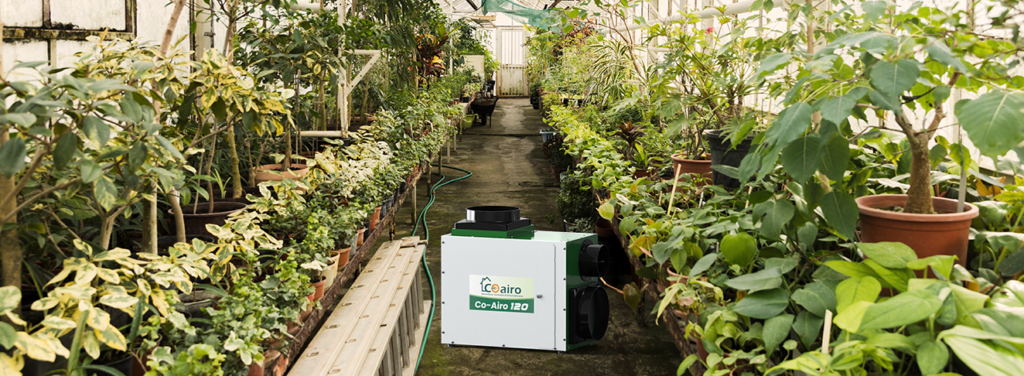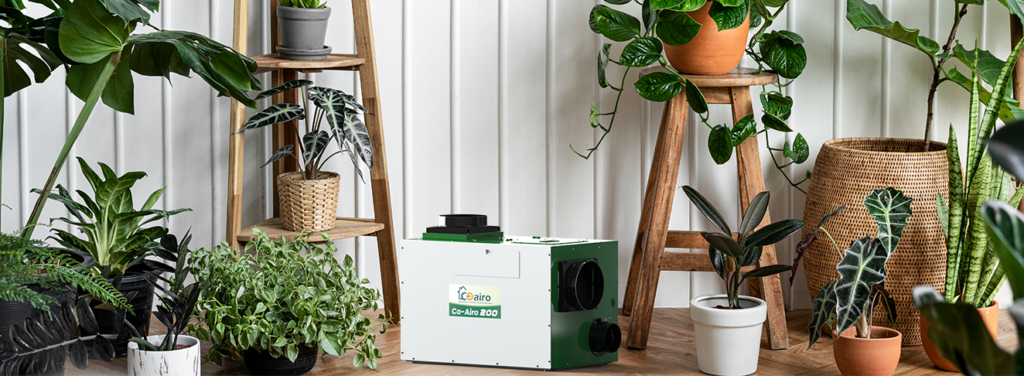A mere five percent change in moisture levels can make the difference between a thriving crop and a failed harvest. So, it’s an art to maintain perfect humidity balance for effective greenhouse cultivation backed by scientific principles.
Modern whole-home dehumidifiers have transformed indoor growing. They offer precise control over challenging indoor conditions. These sophisticated tools not only remove excess moisture but also create an ecosystem that helps plants reach their full potential, maximize yields, and minimize the risks of crop failure.
Let’s find out in detail the scientific principles of humidity control and crop growth, humidity challenges and greenhouses and growing rooms, technical advantages and precise control of whole-house humidity solutions, and their long-term benefits on crop health.
The Scientific Principles of Humidity Control and Crop Growth
Perfect humidity management is key to creating an optimal environment for plant growth and development. Plants need specific humidity levels to thrive, so even a small change can impact their productivity and health. High-quality whole-house dehumidification systems help maintain perfect indoor conditions.
1. Perfect Humidity Levels for Different Crops
Not all plants need the same humidty levels. Different plants have different humidity levels to achieve peak performance. Leafy vegetable crops such as broccoli and asparagus flourish in indoor settings with 85-95% relative humidty. Similarly, fruits like avocados and apples prefer high moisture levels around 90-95%. Therefore understanding these specific humidity requirements helps growers and farmers create suitable conditions using the latest humidity control devices.
2. Impact of Moisture on Plant Physiology
Correct moisture levels directly influence important plant processes such as respiration, transpiration, and photosynthesis. Plants can efficiently take in nutrients and regulate their internal temperature when the humidity levels are balanced. Indoor climate control tools such as dehumidifiers, and ventilation systems help maintain optimal conditions required for stronger and healthier plants with improved growth rates.
3. Role Humiditing in Preventing Fungal Growth
Controlling humidity levels helps prevent unwanted visitors in your growing space. Naturally, less humid environments discourage fungal growth and pest infestations while still supporting healthy plant development. Automated dehumidifying systems help create an indoor setting where plants thrive.
4. Energy Usage and Operational Costs
Using proper tools for controlling humidity significantly impacts your operational costs. Often, conventional HVACs struggle to manage humidity. This leads to increased energy consumption. Using an efficient dehumidifier actually reduces your overall energy costs in most cases as it takes the humidity control burden off your central climate control system. When you use a dedicated tool for humidity control, it pays for itself through improved energy efficiency and better crop yield.
Humidity Challenges in Greenhouses and Growing Rooms
Greenhouses and growing rooms face severe challenges due to low humidity, excess moisture, and seasonal humidity variations.
1. High Humidty Issues
High humidity levels in grow spaces pose serious issues. When moisture levels rise above the required level, they create perfect breeding conditions for mildew and mold build. These unwanted guests damage crops and even comprise entire harvests. In such cases, tools like a whole home dehumidifier help prevent these issues and ensure balanced humidity levels throughout space.
2. Low Moisture Problems
Insufficient moisture equally damages your crop ust as too high humidity causes issues. Often, plants that grow in overly dry conditions show signs of stress. These signs include stunted growth and wilting leaves. Also, they struggle to effectively absorb nutrients. This leads to poor crop quality and reduced yields. Modern smart dehumidification systems help prevent these problems and maintain consistent moisture levels throughout your facility.
3. Seasonal Humidity Changes
Weather and local climate changes throughout the year cause severe challenges in indoor growing settings. Often, the summer season brings excess humidity. Whereas, heating in winter dries out the air dramatically. The latest home dehumidifiers adapt to these weather changes automatically. This helps maintain optimal growing conditions irrespective of external weather patterns.
Technical Advantages and Precise Control of Whole-House Dehumidifiers
Whole-house dehumidifiers offer better control and more technical advantages than other standard dehumidifiers.
1. Integration with HVAC Systems
The whole home dehumidifiers seamlessly integrate into your existing HVAC systems to create a comprehensive humidity control solution. These systems directly tap into your central air system and ensure uniform humidity control over the entire growing space. This integrated approach helps maintain optimal humidity levels and consistent growing conditions from wall to wall.
2. Precise Moisture Management
Modern dehumidifiers feature sophisticated sensors to monitor moisture levels in real-time. These smart units automatically adjust their operations to achieve the targeted humidity ranges and quickly respond to environmental changes. Moreover, built-in hygrometers offer precise readings. This ensures your growing conditions stay within the required zone for healthy plant development.
3. Energy Efficiency
Smart humidty control devices efficiently reduce the workload on your primary cooling and healing system. These models allow your existing HVAC systems to operate more efficiently by handling moisture independently. This approach to humidity control results in lower energy bills and reduced wear on your climate control equipment. Therefore, your initial investment often pays itself through decreased utility costs.
4. Automated Humidty Control
More advanced tools take the guesswork out of humidity management. Programmable settings help you establish perfect moisture ranges for different growing phases, while automated sensors and apps help maintain these levels without constant monitoring and manual intervention. These smart tools even adjust their operations based on seasonal variations or time of day. This ensures ideal growing conditions throughout the year with minimal human intervention.
Long-term Benefits of Whole-House Dehumidifiers on Crop Health
The long-term benefits of whole-house dehumidifiers on crop health are many.
1. Extended Grow Season
A whole home solution breaks down conventional seasonal barriers and maintains perfect growing conditions year-round. With precise humidity control, growers like yourself can cultivate crops way beyond typical harvest times. This climate control tool creates opportunities for year-round productions which maximize the facility usage and increase total yearly yields.
2. Improved Yield and Crop Quality
Constant moisture levels lead to more vigorous and healthier plants that produce superior harvests. When humidity levels remain within required ranges, plants develop robust foliage and stronger root systems. These perfect growing conditions result in better yields and higher quality produce that commands better market rates.
3. Reduce Crop Losses
Heavy-duty dehumidifiers work as a protective shield against common growth groom and greenhouse threats. Naturally, such models discourage pest infestations and mold growth that can devastate crops by maintaining optimal humidity requirements. This proactive way to indoor climate control significantly reduces crop losses and secures your investment through the entire growing cycle.
4. Better Air Quality
Effective humidity control goes beyond plant health. Also, it’s about creating a more comfortable workspace for greenhouse staff. Controlled moisture levels reduce airborne pollutants such as spores, dust smite, and other particulates that affect air quality. So, grow space workers benefit from cleaner air and more comfortable conditions. This results in increased productivity and better facility management. Also, the controlled indoor setting makes it easier to maintain consistent growing practices throughout the year.
Conclusion
Integration of whole-home dehumidifiers into grow room and greenhouse operations shows a significant step forward in agricultural technology. These modern tools have revolutionized indoor growing from an unpredictable venture into a precise science. This gives growers unprecedented control over their farming environment.
As climate variations continue to impact conventional cultivation methods, the role of controlling agriculture becomes increasingly significant. Whole house dedication solutions stand at the forefront of this agricultural innovation. The future of sustainable year-round crop production relies on such innovative indoor climate management solutions. So, why not consider investing in such an effective solution today?


